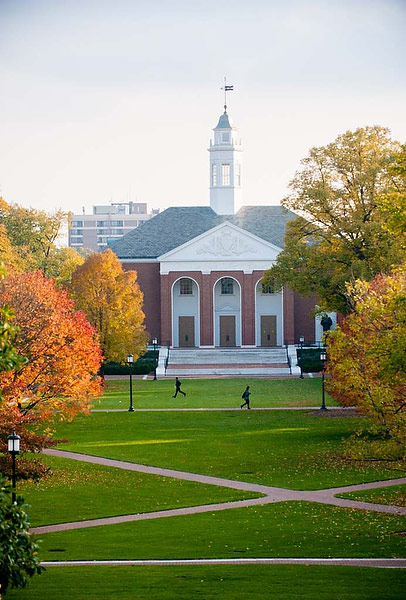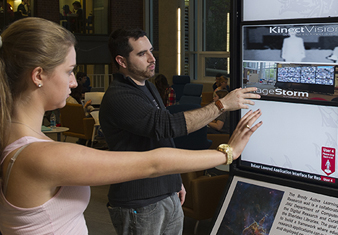
A Strategic Plan
A multiyear initiative to chart the future trajectory of the Krieger School.
Last year, the Krieger School of Arts and Sciences completed a comprehensive strategic planning process to map the future of the division.
 The planning started four years ago with a period of internal deliberation and external review. This phase included roughly 30 two-day “Futures Seminars”; the development of academic blueprints by each of the 22 departments and 10 programs in the school; external reviews by senior academics from more than 80 universities; and the drafting of multiyear hiring plans for each department and program. In fall 2012, the Dean’s Office convened a Faculty Advisory Committee on Budget and Strategic Planning to explore a range of specific policy proposals. In 2013, faculty across the division were asked to comment on interim versions of a planning document.
The planning started four years ago with a period of internal deliberation and external review. This phase included roughly 30 two-day “Futures Seminars”; the development of academic blueprints by each of the 22 departments and 10 programs in the school; external reviews by senior academics from more than 80 universities; and the drafting of multiyear hiring plans for each department and program. In fall 2012, the Dean’s Office convened a Faculty Advisory Committee on Budget and Strategic Planning to explore a range of specific policy proposals. In 2013, faculty across the division were asked to comment on interim versions of a planning document.
This process culminated in a final report in November 2013, which set a path forward for the school in a range of areas: enhancing graduate education, strengthening undergraduate education, promoting excellence within the faculty, supporting faculty development across the professional career span, addressing divisional infrastructure and the physical plant, optimizing administrative efficiency, and planning for the future of the Advanced Academic Programs and online education. The recommendations set out far-reaching proposals in each area, with a recognition that, consistent with the model of selective excellence, the school would need to make difficult choices about where specifically to allocate resources and commit to growth to realize the vision in the report.
 One section of the report in particular elicited passionate debate from faculty and graduate students. The faculty advisory committee had considered data on applications, yield, attrition, time to degree, and size of stipends at Hopkins and other major research institutions, and reached three interlocking conclusions about its graduate programs: that the social sciences and humanities should aim to provide year-round stipends, that the stipends should equal those provided in the natural sciences, and that the size of the graduate cohort should be reduced to make it possible to reach this stipend level. Many faculty and students voiced apprehension about the effect the changes would have on the size of programs and the seminar culture, among other concerns.
One section of the report in particular elicited passionate debate from faculty and graduate students. The faculty advisory committee had considered data on applications, yield, attrition, time to degree, and size of stipends at Hopkins and other major research institutions, and reached three interlocking conclusions about its graduate programs: that the social sciences and humanities should aim to provide year-round stipends, that the stipends should equal those provided in the natural sciences, and that the size of the graduate cohort should be reduced to make it possible to reach this stipend level. Many faculty and students voiced apprehension about the effect the changes would have on the size of programs and the seminar culture, among other concerns.
These concerns led to many months of additional discussions, and ultimately the completion of a final version of the stipend reform plan in June 2014 that sought to address the majority of the concerns by returning decision making to departments, minimizing cohort reductions, and modestly reducing the originally proposed stipend increase.
The recommendations set out far-reaching proposals in each area, with a recognition that, consistent with the model of selective excellence, the school would need to make difficult choices about where specifically to allocate resources and commit to growth to realize the vision in the report.
This multiyear process is informing the school’s campaign plan and driving the school’s budgeting and planning into the future. Among the new strategic initiatives it yielded is a revamped faculty leave program that provides more frequent leave for all tenure track faculty and an option for accelerated sabbatical leave for those teaching greater proportions of undergraduate courses. The new faculty leave policy makes Johns Hopkins competitive in accelerated faculty leave with most of its peer institutions and has the dual effect of enhancing protected time for faculty to focus on their research and scholarship while increasing the number of exciting courses offered to our undergraduate students. Additional examples of new initiatives include a program in Islamic studies, stronger ties with the arts community of Baltimore, and participation in the university’s signature initiatives and Bloomberg Distinguished Professorship programs.



